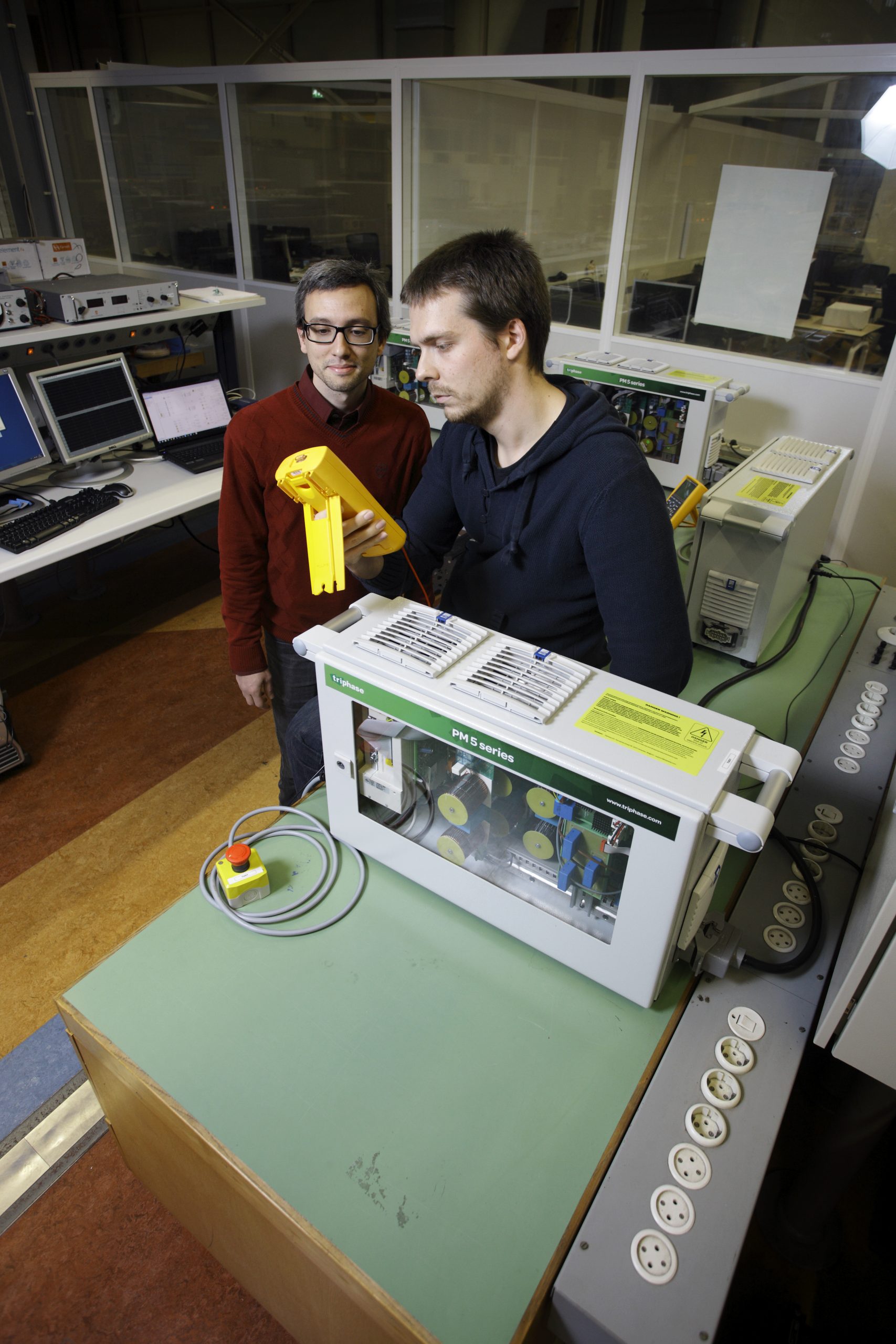In the North Sea, impressive wind farms are getting bigger and further from shore. The underwater cabling, which brings the electricity ashore, is starting to resemble spaghetti.
But the lab of Direct Current Systems & Storage is working on it.
The lab focuses on sustainable and reusable energy sources. In the tallest building on campus, the students are hard at work researching wind, sun and wave energy. The researchers are fine tuning these resources to be more efficient, cost effective and environmentally friendly, while integrating them with the current power grid.
Current electrical grids run alternating current (AC). The new Direct Current Systems & Storage lab is looking to show that direct current (DC) is viable alternative. “Renewable resources are DC by nature and so are a lot of everyday appliances,” explains Brazilian Ph.D. candidate Rodrigo Teixeira Pinto. To integrate DC to our AC power grid, converters need to be employed. Sitting within a semicircle of three computers and four AC/DC converters, Pinto explains how they work, “The converters normally run isolated. My project goal was to integrate them together in a multi-terminal DC network and control it. I’m focusing on the connection of offshore wind farms in the North Sea.”
Pinto began working with Greek master’s student Epameinondas Kontos two years ago. Now that Pinto is poised to continue Pinto’s groundbreaking research. “My project is to connect future Dutch and British wind farms together with DC and protect that network,” said Kontos.
Over 100 years ago, AC the Edison versus Westinhouse Current Wars because it was easier to control. With the new technology of today, DC can be used very effectively. Pinto sums it all up, “AC networks are like a cell phone from the 90’s. It still works, but it’s not a smart phone.”



Comments are closed.